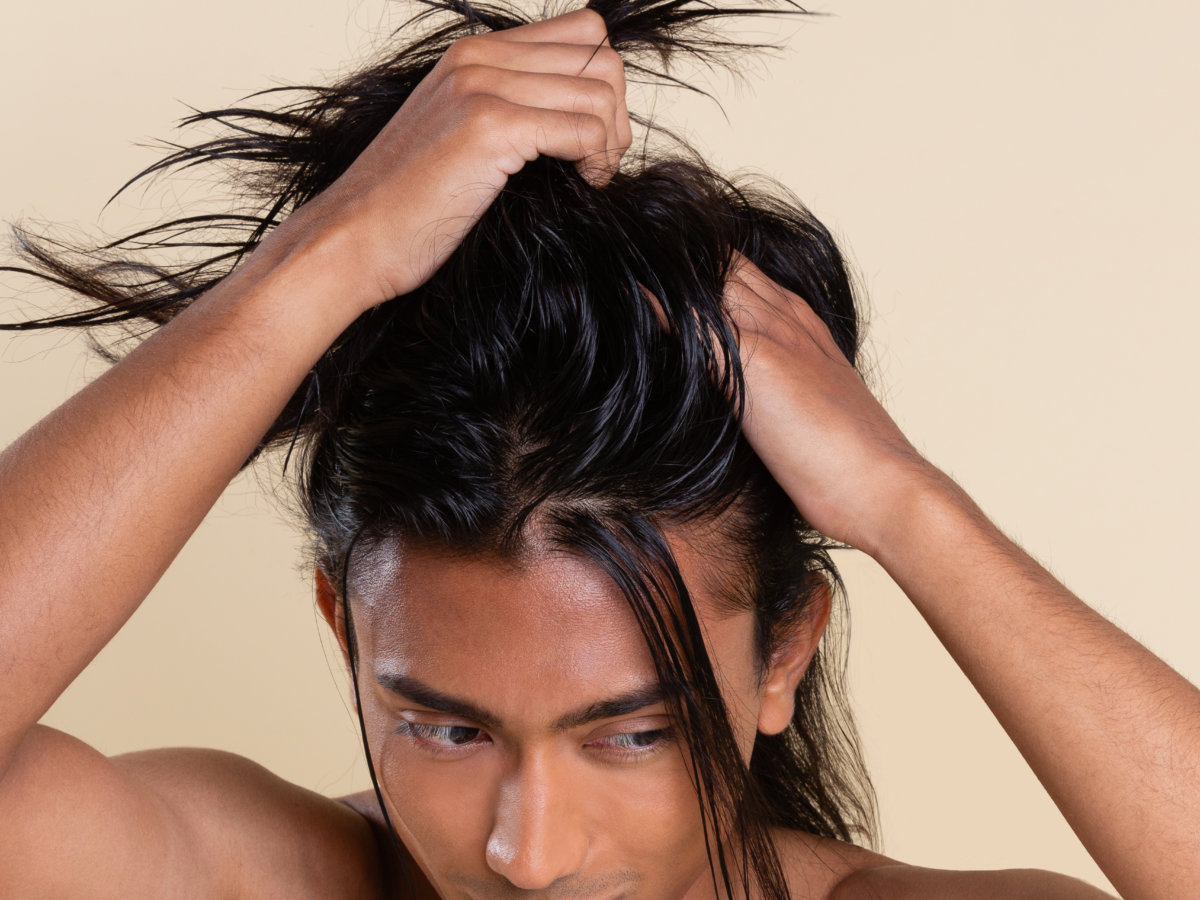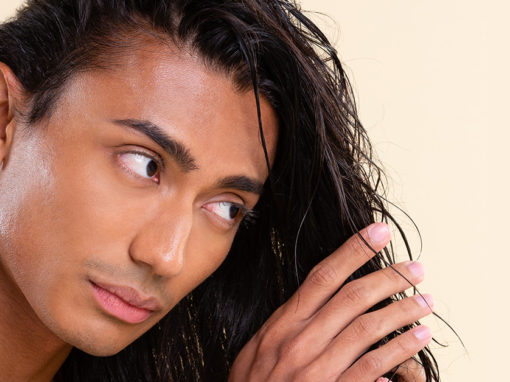A few strands of loose hair on your pillow or in your comb is no reason to worry. Finding clumps of hair in the shower drain or in your palms while washing should be a cause for concern. When a person is facing hair loss, the initial phase is usually unnoticeable.
Gradually, you may be able to notice minor changes such as patchy hair loss or thinning hair. Having a hard time accepting hair loss might prevent you from seeking out treatments to help ease the worsening condition. There have been real situations where people only start to realise the severity of hair loss when it is obvious. By then, the reality of hair loss will hit you, very hard.
Hair loss can psychologically impact your mental health. This can be both far-reaching and debilitating in nature. Some examples include sadness, anxiety and depression. These emotions comes from the psychological distress caused by a shattered self-confidence, or low self-esteem. More importantly, hair loss could indicate the presence of other underlying health conditions.
Hair loss has become more common in recent time, leading to the development of several different treatment options. Let’s examine closely the different types of hair loss, along with the treatment modalities available. Shall we, ladies and gentlemen?
Should I Be Worried If I Am Losing Hair?

An individual with a full head of hair usually has more than 100,000 hairs on his or her head. In that regard, a daily loss of 50 to 100 hair strands is not a cause for concern. So, how much should be considered too much hair loss?
In order to understand the severity of your hair loss, you must first ask yourself the following questions:-
- When you run your fingers through your hair, does it still feel as thick as before?
- When taking a shower, how many hairs do you find, on average, stuck to the drain cover?
- While you brush or comb your hair, how many hairs do you find stuck to the comb?
- Does it appear as if your hairline has receded or changed in appearance when you look in the mirror?
You may know whether or not you are facing hair loss based on your answers to the questions above. Perhaps you may have already known about it for some time, but were unwilling to accept the situation.
Either way, the time to take action is now. Accepting this as a problem is the first step in treating your hair loss successfully. Beginning with identifying the type of hair loss you are experiencing, you can then decide on a suitable treatment.
What Type of Hair Loss Are You Experiencing?
While hair loss occurs due to many different factors, some kinds of hair loss are more common than others. To differentiate the different type of hair loss, you could look at the risk factors and symptoms. They include:
Male pattern baldness (MPB)
MPB is the most common form of hair loss amongst men, even men who are in their 20’s. The cause of MPB is typically a combination of genetic and hormonal factors. However, the signs of MPB will only be visibly apparent after a few years. These signs include a receding hairline, a bald spot on the crown of the head, or a general thinning of hair on the top of the head.
Telogen effluvium (TE)
TE is another common type of hair loss amongst men. The trigger for this condition is extreme stress, illness or physical injury. TE causes hair follicles to prematurely enter the dormant phase, impeding hair growth. Unfortunately, this condition is usually irreversible. The symptoms of TE include an increase in hair shedding, or diffuse thinning over the entire scalp.
Spot baldness (SB)

SB, meanwhile, is an autoimmune disorder that occurs as a result of an individual’s immune system mistakenly attacking their hair follicles. These damaged follicles eventually impede hair growth, causing an individual to develop circular bald patches all over their scalp.
Traction alopecia

Traction Alopecia, on the other hand, is relatively different from all other types of hair loss. This is because it is usually caused by tension created through a constant pulling on the hair follicles, which comes as a result of tight hairstyles. This type of hair loss can result in small bald spots on the scalp or a visible thinning of the hair.
Alopecia totalis (AT) and alopecia universalis (AU)
AT and AU are both forms of alopecia areata. Alopecia totalis is characterised by complete hair loss over the entire head, while alopecia universalis may also include hair loss over the entire body.
What Are Your Treatment Options?

Have you identified your type of hair loss? Once you have, it is advisable for you to seek consultation with a doctor. The doctor will be able to diagnose and recommend suitable treatment modalities to mitigate your specific hair loss type correctly. For example, MPB, an incurable form of hair loss, affects more than 70 per cent of men by the age of 70. However, it can be managed effectively using several different treatment options.
Finasteride
Finasteride (also known by its brand name, Propecia) is an oral medication that blocks testosterone from being converted into DHT. DHT is the male sex hormone responsible for hair loss. This, in turn, helps to either slow or stop hair loss. In some cases, finasteride has also been known to promote a hair regrowth. However, it is important to note that this can only happen with consistent and prolonged intake of medication.
Minoxidil
Minoxidil is a topical solution that opens up the blood vessels to the hair follicles. Similar with Finasteride, it needs to be taken consistently for positive results. Anti-hair loss shampoos are also a viable option, but should only be used in concert with other medications.
If you suffer from TE, you need to identify the underlying cause of the stress. Once you have address the root cause, your hair will most likely resume its normal growth cycle. For cases of Traction Alopecia, the treatment is similar to TE. Do yourself a huge favour and find alternative hairstyles to replace your current tight ones. As soon as you do, your hair will find its way to resume healthy growth.
The management of SB usually involves the use of steroid injections, scalp irritants, topical immunotherapy, hair loss shampoos and laser light therapy. Unfortunately, there is no cure for this particular type of hair loss. And there seems to be no effective treatment modality capable of restoring hair loss caused by an autoimmune reaction. In the meantime, alternative treatment modalities such as acupuncture and photochemical therapy are currently being studied. However, there are no conclusive results available to prove the effectiveness of these options just yet.
Take a look at our hair loss prescription kit with Finasteride and Minoxidil 5% that helps to treat male pattern baldness and stimulate hair growth more effectively when used together.
What Can You Look Forward to In the Future?
When it comes to hair loss, the outcome of your treatment routine depends on different factors. You may expect noticeable results after three to six months only if you are consistent in taking your medications. Additionally, your daily routine has to avoid hair loss triggers. If not, it increases the likelihood of your treatment becoming ineffective. Instead, try these 4 daily habits that could slow your receding hairline.
In any case, the most important thing to remember is to never lose hope. For as long as you are able to maintain consistency, you can expect to stop the clock on hair loss, and achieve a more positive outlook on life, one strand of hair at a time.


